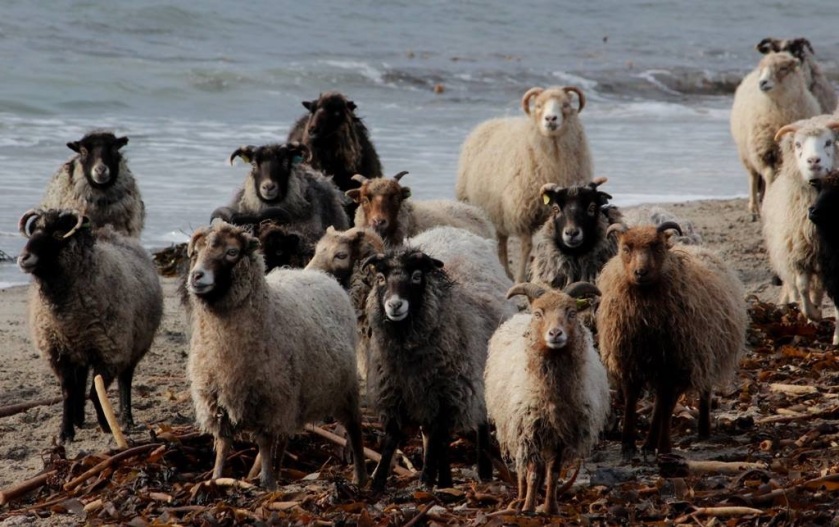
We have just returned from a three-day trip to join in the North Ronaldsay Sheep Festival, the first week of which was focused on helping to repair the 13-mile stonewall sheep dyke that surrounds the island and confines the famous seaweed-eating sheep to the foreshore. This breed has adapted over centuries to extract all the nutrient they normally require from seaweed washed ashore. During the lambing season ewes get a short boost feeding on grass to increase their milk supply, after which they and their lambs return to the foreshore with the males. Too long on grass and they will succumb to copper poisoning.
‘North Ron’ as it is colloquially known, is the northernmost island of the Orkney archipelago, roughly 30 miles distant as the gannet flies from Kirkwall. It takes nearly 3 hours to reach by ferry from Orkney Mainland, but only 20 minutes at 130 mph in an Islander aircraft. Unsurprisingly therefore, there are only one or two freight service ferries per week, but at least three daily flights which is more than most inter-island services.
In their comprehensive travel guide to the outer islands, Orkney Islands Council (OIC) assigns North Ron the epithet, “The island time forgot“. Considering that last year OIC invested in a new fleet of airfield fire trucks across the outer islands and just in the last week (July 2016) opened a brand-new airfield “terminal building” here, it is clear that the council has not entirely forgotten this far-flung island.
As a previous day-trip to North Ron in 2015 showed us, because of the sheep dyke this is not an easy island to walk around except by using the 4 mile arterial road, at the southern end of which lies the ferry pier and at the north is the British Isles’ tallest land-based lighthouse (139 feet, 176 steps). This is a landscape entirely devoted to livestock farming; it is not picturesque although many people see beauty in it.
Todays’s ageing North Ron population of around 50 people is less than a tenth of that when the kelp industry was at its peak in the 18th and 19th centuries. Many of the land owners are struggling to maintain their farms and the sections of sheep dyke that each is responsible for, hence the initiatives to bring in volunteers to help rebuild the sections that are damaged in the winter storms. Despite the effort required, this is still the cheapest method of preserving the integrity of the breed. The festival volunteers will also help with the annual punding and clipping.
Local infrastructure services are basic to say the least. There is one elementary school and one pupil on the island. That pupil has one more year before she has to attend senior school on Orkney Mainland, probably as a weekly-boarder. If other young families cannot be encouraged to move to North Ron, the school will close; re-establishing it in the future would inevitably be a massive challenge. There is no housing in a habitable state for new families to occupy and there are no professional builders on the island, so anybody with a desire to live here tomorrow would likely need to ship in a flat-pack house and erect it themselves (such initiatives are not uncommon in Scotland). There are small pockets of modernity at each end of the island – the Bird Observatory with guest rooms in the south, and a wool mill and holiday cottages at the lighthouse in the north. Outside of the sheep festival I suspect there is not a lot going on.
Returning to the supply-side of the equation, both the unique North Ron meat, sold only as mutton, and the wool are in high demand. With appropriate marketing, demand could in principle be massively higher. Currently however, the island does not have the resource to fulfill increased demand. The future looks grim unless OIC repeats the steps it took on the even smaller island of Papa Westray in 2001 to provide cheaper housing and bolster the population.
See the North Ronaldsay Sheep Festival website and associated Facebook page for further information. Here are a few images showing progress on dyke repairs to which I made a small personal contribution:












We love North Ron. It was always inked in early on our itinerary for any Orkney holiday. In fact, one holiday was spent entirely on North Ron. Happily, I am now able to occasionally travel there for work, though the logistics are a bit more complicated. Showing up at the Inter-island check-in desk at Kirkwall Airport with a 1m drill bit tends to raise a few eyebrows.
LikeLiked by 1 person